
How Do Self-Driving Tesla EVs Work? – The Tech Behind Series
Julian Wallis
17 min read
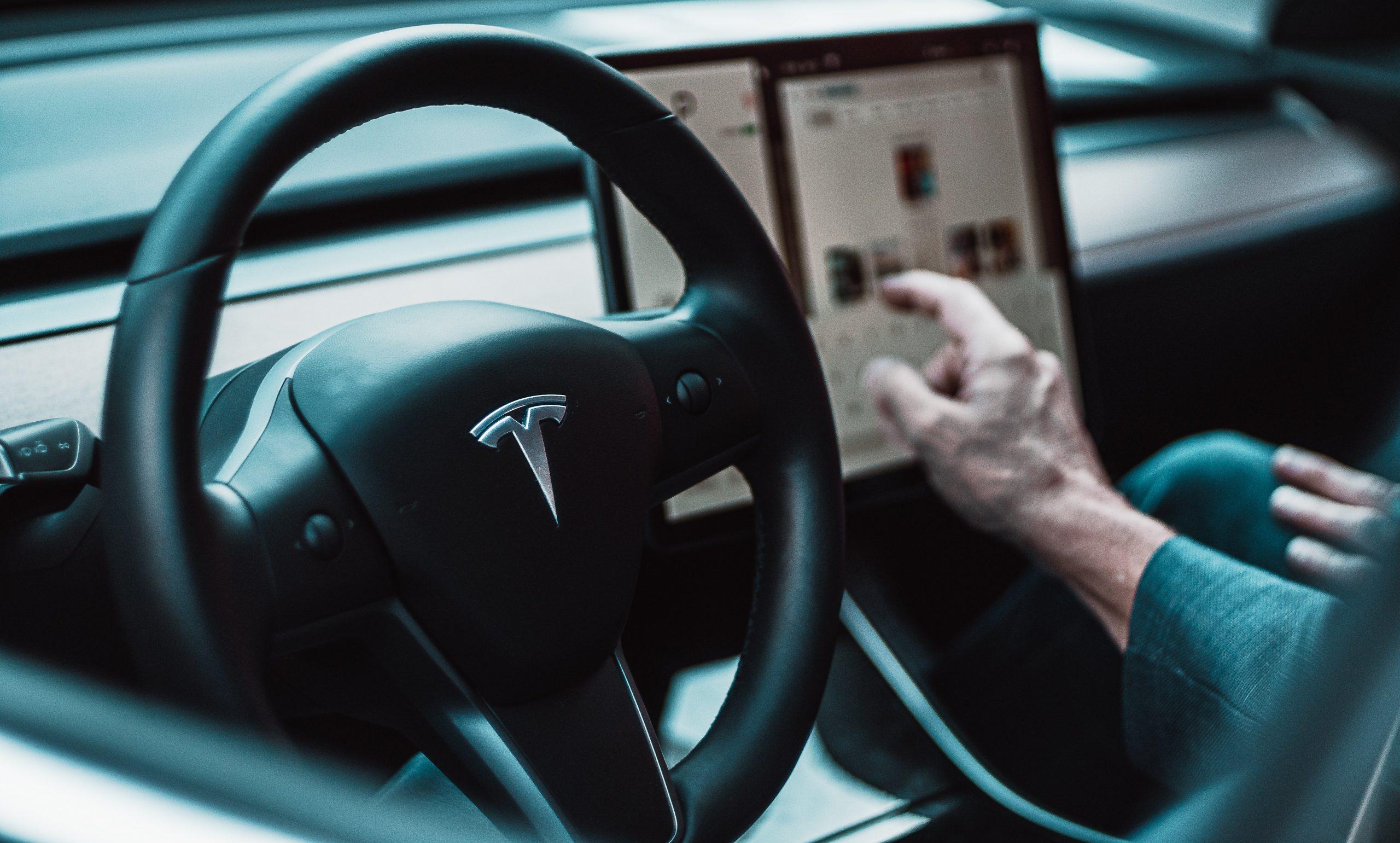
Last time, we looked into the tech behind Google Maps. In this edition, we’re exploring the tech behind Tesla’s electric vehicles and what makes them stand out from the crowd.
Introducing Tesla ⚡
Gone are the days when self-driving cars used to be a thing of sci-fi stories! Thanks to companies like Tesla Motors, the once far-fetched dream of riding an autonomous vehicle is slowly becoming a reality.
Tesla Motors is an American company specialising in electric vehicles, renewable energy storage, and solar panel manufacturing. Founded in 2003, the company is named after Serbian-American electrical engineer and physicist Nikola Tesla.

In addition to selling cars, Tesla also offers leases and loans for its vehicles, solar panels, and batteries through Tesla Financing. Though it’s involved in other projects, we will be looking primarily at their autonomous driving technologies with a focus on computer vision and battery tech.
The company’s first product was the Roadster, an all-electric sports car that could travel up to 245 miles on a single charge. Roadster was followed by Model S, a sedan that can go up to 265 miles (more on this below), and Model X, a crossover SUV with up to 295 miles of range. In the subsequent sections, we will explore more about the technology behind the success of these cars.
Under the leadership of Elon Musk, who co-founded Tesla, the company has been continuously developing autonomous driving technology for its cars. It plans to roll out a ridesharing service using self-driving vehicles.
But first, a short walk down memory lane regarding the development of self-driving cars!
A Brief History Of Self-Driving Cars 🎥
The self-driving car is not a new concept. In fact, the first attempt to build an autonomous vehicle goes way back to the 1920s. However, it wasn’t until the 2010s that self-driving cars started becoming a reality, with companies like Google, Tesla, and Uber leading the charge.
The first self-driving car was developed in the 1980s by Mercedes-Benz. The company’s engineers used a modified S-Class sedan to create a vehicle that could drive itself at speeds of up to 30 mph (48 km/h). The project was abandoned shortly after that, but it laid the groundwork for future self-driving cars.
In the 1990s, several companies and research groups began developing prototypes of self-driving cars. Among them was Carnegie Mellon University’s Navlab, which built several vehicles to navigate city streets and highways. One of Navlab’s vehicles, dubbed “the world’s first autonomous SUV,” even completed a 3,100-mile (5,000 km) cross-country road trip in 1995.
In 2004, the Defense Advanced Research Projects Agency (DARPA) launched the Grand Challenge, a competition to promote the development of self-driving cars. The first challenge was held in March 2005 and featured 15 vehicles from different teams. Unfortunately, none of the cars completed the course, but DARPA held another challenge in October 2005 with more successful results. Six vehicles finished the 132-mile (212 km) course, with Stanford University’s Stanley taking first place.

Several companies are now working on bringing self-driving cars to market. Tesla, Mercedes-Benz, BMW, and Audi have all announced plans to release production vehicles within the next few years. Volvo has even said that it will accept liability for accidents caused by its self-driving cars.
As technology develops, self-driving cars will likely become increasingly common on roads worldwide. Now, let’s get back to the present time and understand more about the success of Tesla’s autonomous vehicles.
Tesla’s Self-Driving Cars 🚘
Here, we will take a look at two of the most famous Tesla cars: The Model S and The Model 3. We will understand why these two have become so popular over time.
😎 The Model S
Interestingly, Tesla invented its first self-driving car in 2012: The Model S, an all-electric five-door liftback sedan.
The Model S was designed from the ground up as an electric car and incorporated many unique features not found on other vehicles, such as a large touchscreen display, an all-wheel drive system, and advanced driver assistance features.
One of the most significant features of the Model S is its self-driving capability. The Tesla Model S is equipped with eight cameras, twelve ultrasonic sensors, and a forward radar system that enable it to see and avoid obstacles while driving autonomously. The car is also equipped with GPS and mapping data that allow it to navigate to its destination without needing input from the driver. The Model S can even park itself without needing a driver to be present.
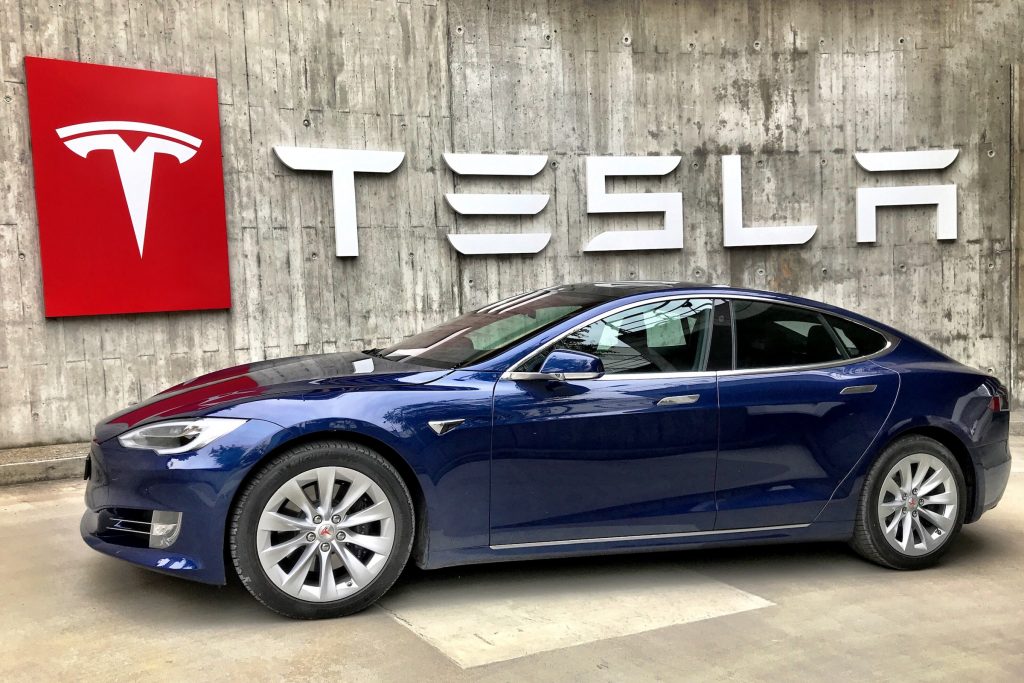
The Tesla Model S is one of many self-driving cars on the market. Several companies, such as Alphabet Inc.’s Waymo and General Motors Co.’s Cruise, have developed autonomous vehicles. However, the Model S remains the most advanced and capable self-driving car available today.
The Tesla Model S is not without its critics, however. Some have raised concerns about self-driving cars’ safety and whether they are ready for public roads. Others have questioned the ethics of giving a car the ability to make decisions that could result in the death or injury of people. Despite these concerns, the Tesla Model S remains one of the market’s most popular and sought-after self-driving cars.
The Model S offers a variety of features that make it an attractive choice for those looking for a self-driving car, including its advanced autopilot system. The Tesla Model S also has a spacious interior and sleek exterior design, making it a stand-out option in the self-driving car market.
🤩 Introducing The Tesla Model 3
The Tesla Model 3 is an all-electric four-door sedan produced by Tesla Motors. As of June 2018, the Model 3 is the world’s best-selling all-electric car. The Model 3 has a range of 220 miles (350 km) on a single charge and can accelerate from 0 to 60 miles per hour (0 to 97 km/h) in 5.6 seconds. The base model starts at $35,000, making it the most affordable Tesla vehicle yet.
Despite its low price tag, the Model 3 still comes packed with features that make it a worthy competitor in the luxury car market. These include:
- An autopilot system that can keep the car within its lane and a distance from other vehicles
- Semi-autonomous driving capabilities
- A 15-inch touchscreen display
- Over-the-air software updates that add new features and improve performance over time
Tesla Model 3 is an electric car that doesn’t sacrifice luxury or performance. Watch the following video to learn more about the car’s cool features.
The Tech Behind Tesla’s Self-Driving Cars 📟
As Tesla’s self-driving cars become increasingly advanced, it’s essential to understand the science behind them. So here’s a deep dive into how Tesla’s autonomous vehicles work.
Tesla’s self-driving cars are equipped with sensors that allow the vehicle to “see” its surroundings. These include cameras, radar, and ultrasonic sensors. The data collected by these sensors is processed by the car’s computer, which then decides how to navigate the environment.
And this is done with the help of Tesla Vision — an advanced driver-assistance system that uses cameras and sensors to provide enhanced safety and convenience features. These include:
- Autosteer: Assists with steering by keeping the car in its desired driving lane when cruising at a set speed. It also allows the driver to turn at signals, as it detects the lane marking and the presence of other vehicles.
- Traffic-Aware Cruise Control: Automatically adjusts the car’s speed to surrounding traffic and controls the navigation. When a vehicle is detected, this function slows the car down and maintains a time-based distance between the vehicles. However, this does not eliminate the need to watch the road or hit the brakes when needed.
- Auto Lane Change: Helps change lanes on the highway. In other words, Auto Lane Change is a system that actively detects the presence of vehicles in the blind spot and, when clear, performs a lane change manoeuvre at the driver’s request.
- Enhanced Autopilot: A more advanced suite of features that includes Navigate on Autopilot, which can guide lane changes and merge onto highways.
👓 Here’s How Tesla Vision Works
The cameras detect objects in the car’s path, while the radar and ultrasonic sensors help the car avoid obstacles and identify potential hazards. The computer then uses this information to generate a 3D map of the world around the vehicle. This map plans the car’s route and decides how to avoid obstacles.
The car’s computer is constantly learning and updating its understanding of the world around it. As it processes more data, it becomes better at deciding where to go and how to avoid obstacles. This process is what allows Tesla’s self-driving cars to become more and more autonomous over time.
Tesla’s Autopilot system uses a combination of radar, cameras and sensors to automatically keep the car in its lane and at a safe distance from other vehicles on the road. The system can also bring the car to a stop if it detects an obstacle in its path.
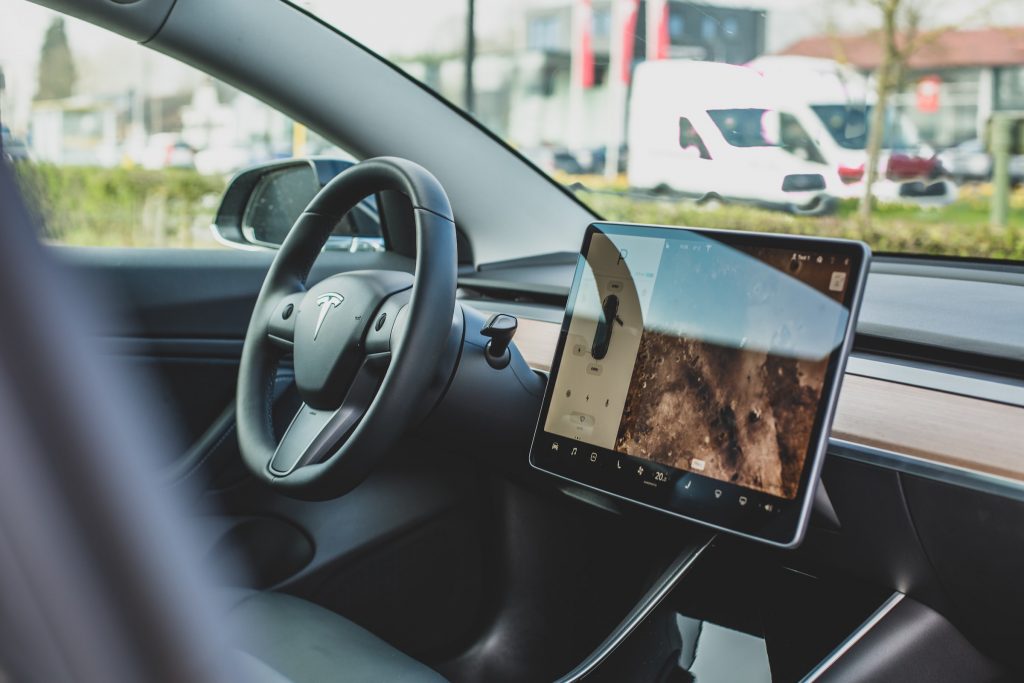
Tesla’s vision for self-driving cars is based on the idea that the vehicle should be able to handle all aspects of driving, including parking and changing lanes, without any input from the driver. Instead, the goal is for drivers to be able to sit back and relax while their car does all the work.
Tesla is constantly updating and improving its Autopilot system to make this vision a reality. The company has already made significant progress, with its latest version of Autopilot offering features that were not possible just a few years ago. One of the critical components of Tesla’s Autopilot system is its array of cameras and sensors. The system uses these to constantly monitor the environment around the car and identify potential hazards.
The cameras and sensors give the car a 360-degree view of its surroundings. The computer then processes this to create a 3D map of the area. This map is used to plan the car’s route and avoid any obstacles in its path.
The latest version of Autopilot also includes features that allow the car to change lanes on its own and park itself without any input from the driver. These features are still in development, but Tesla has already demonstrated that they are possible.
Tesla’s vision for self-driving cars is not just about making the car more intelligent but also about making the driver unnecessary. The goal is to create a vehicle that can handle all aspects of driving independently, without any input from the driver. This would allow drivers to relax and enjoy the ride rather than having to focus on the road.
🔋 The Great Thing About Tesla’s “Million-Mile Battery”
One of the most impressive things about Tesla’s new “million-mile battery” is that it has the potential to completely change the way we think about electric vehicles. Until now, range anxiety has been a massive concern for potential electric vehicle buyers – but with a battery that can last up to a million miles, that worry is no longer an issue.
Of course, Tesla isn’t the only company working on long-range batteries for electric vehicles. But what sets Tesla apart is that they are the only company mass-producing electric vehicles with this technology. This means that Tesla is leading the way regarding range and affordability — two crucial factors for electric vehicles.
In addition to changing the way we think about electric vehicles, Tesla’s million-mile battery also has the potential to change the way we generate and store energy. For example, a battery that can last for so long opens up the possibility of using electric cars as mobile power plants. This could be a game-changer for responding to power outages or other emergencies.
Overall, Tesla’s million-mile battery is an awe-inspiring achievement. It has the potential to completely change the way we think about electric vehicles – and that is something that is definitely worth paying attention to.
🔌 How Does A Tesla Battery Work?
Tesla batteries are among the most efficient and longest-lasting on the market today. But how do they work?
Tesla batteries are made up of several thousand cylindrical cells, each containing a positive electrode of lithium cobalt oxide (LiCoO2) and a negative electrode of carbon. When the battery is charging, lithium ions flow from the positive electrode to the negative electrode and back again. This flow of ions creates an electric current that can be used to power an electric vehicle.
The cells in a Tesla battery are arranged in modules, each containing multiple cells connected in parallel. The modules are then connected in series to create a high-voltage battery pack. This design allows the battery to store energy while still being lightweight and compact.
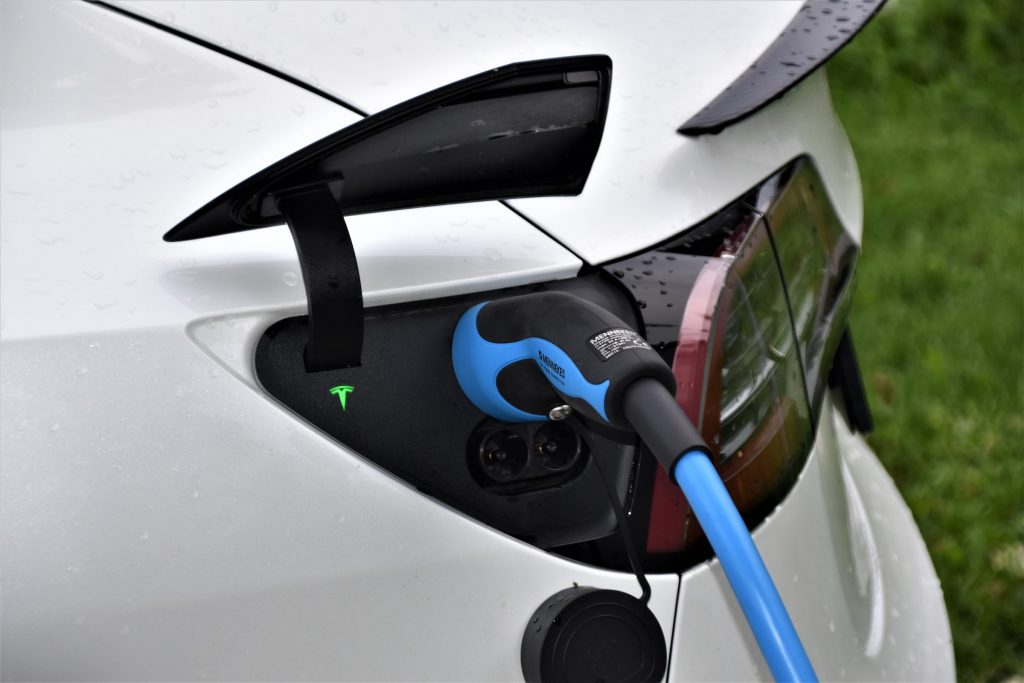
Tesla batteries are designed to last an electric vehicle’s lifetime, typically around 300,000 miles. In addition, the company offers an 8-year warranty on its batteries, which covers degradation below a certain threshold. Tesla also offers a battery replacement program for customers who experience significant degradation.
Tesla is constantly working to improve the performance and efficiency of its batteries. For example, the company recently released an updated battery pack that offers a longer range and faster charging times. Tesla is also working on developing a new type of battery cell that could significantly increase the capacity and efficiency of its electric vehicles.
Ways Tesla Is Using Artificial Intelligence & Big Data 🤖
As one of the leading companies in electric vehicles and artificial intelligence companies, it’s no surprise that Tesla is at the forefront of using artificial intelligence (AI) in its cars. From autonomous driving to infotainment systems, AI plays an increasingly important role in making Tesla’s cars some of the most technologically advanced on the market.
Tesla’s goal is to have a fleet of fully autonomous vehicles on the road by 2030. To achieve this, Tesla has collected data from its cars equipped with Autopilot, its semi-autonomous driving system. This data is then used to train the AI system that will power autonomous vehicles.
Here are a few examples of how Tesla uses AI in its cars:
- Autonomous Driving: The most well-known example of Tesla using AI is its independent driving system. Using a combination of sensors, cameras, and GPS data, the car’s computer is constantly learning and improving its ability to drive itself. While the system isn’t perfect yet, it’s getting better all the time and can handle many everyday driving tasks without human input.
- Infotainment Systems: The large touchscreens in Tesla’s cars are powered by AI-enabled software that provides passengers with a wealth of information and entertainment options. The system constantly learns and adapts to the user’s preferences, making it more intuitive and convenient.
- Safety Features: Tesla’s cars are equipped with several cutting-edge safety features that use AI to help keep occupants safe. For example, the car can automatically apply the brakes if it detects an obstacle in its path, and the headlights will adjust their brightness level based on oncoming traffic.

As you can see, Tesla uses AI in various ways to make its cars more convenient, safe, and enjoyable to drive. And with the company’s constant innovation, we’ll likely see even more AI-powered features in Tesla’s cars in the future.
Big data is also playing a role in Tesla’s quest to innovate. The company collects data from all its vehicles, including those not equipped with Autopilot. This data is then used to improve the design of future cars. Information is also used to help Tesla’s autonomous vehicles make better decisions. By understanding how people use their cars, Tesla can ensure that its self-driving cars are as safe and efficient as possible.
In short, Tesla is using AI and big data to change how we think about transportation. The company aims to make driving safer, more efficient, and more convenient. By using these technologies, Tesla is well on its way to achieving this goal.
Challenges For Tesla’s Self-Driving Cars ⚔️
Inexperience with self-driving technology and regulations, high costs, and public scepticism are just some of the challenges Tesla faces as it works to bring its self-driving cars to market.
In recent years, Tesla has been at the forefront of developing and testing self-driving car technology. However, the company still needs to be able to mass produce and sell autonomous vehicles. There are several significant challenges that Tesla needs to overcome before its self-driving cars can become a reality.
Self-driving cars are still not legal in many jurisdictions around the world. As a result, Tesla will need to work closely with governments to get approvals for its autonomous vehicles. It must also ensure that its cars meet all safety and legal requirements.
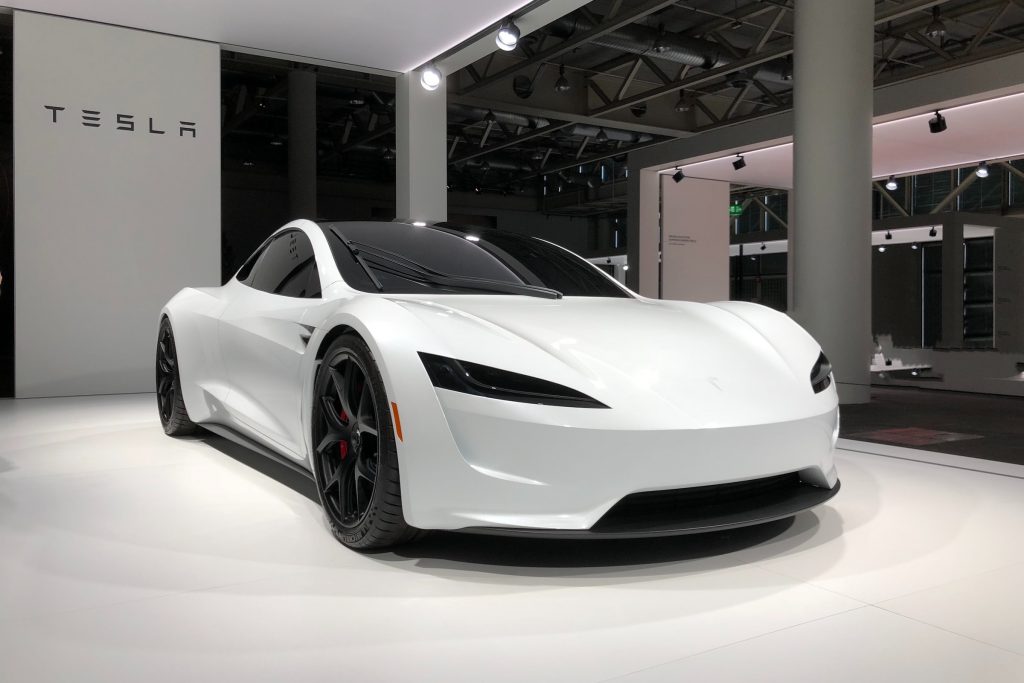
Another challenge for Tesla is the high cost of developing and deploying self-driving car technology. The company has estimated that it will need to spend billions of dollars to bring its autonomous cars to market. But unfortunately, not all investors may be willing to make this significant investment.
Finally, there is also the issue of public scepticism when it comes to self-driving cars. Many people are still hesitant about trusting their lives to a computer-controlled vehicle. Tesla will need to work hard to convince the public that its autonomous cars are safe and reliable before they will be willing to buy them.
Despite the challenges, Tesla remains confident that it will be able to bring its self-driving cars to market.
The Future Of Self-Driving Cars 🔮
The future of self-driving cars looks promising. Many factors point to a future where these vehicles will be commonplace on our roads. Here are some main reasons why we believe this is the case.
⌚ Time Management
It’s estimated that the average person spends around 46 minutes driving each day. That’s a lot of time spent behind the wheel, and it’s not surprising that many people would prefer to do something else with that time — like relaxing, working or catching up on sleep. Self-driving cars could provide the perfect solution, allowing people to use that time more flexibly.
🧪 Improving Technology
The technology behind self-driving cars is also improving rapidly. The first generation of these vehicles relied heavily on GPS systems and mapping data to navigate. Still, the latest models use much more sophisticated technology, such as LiDAR (Light Detection and Ranging) sensors and computer vision. This means they can navigate much more accurately, even in challenging conditions like heavy traffic or bad weather.
💸 Modern Benefits
Self-driving cars could have a massive impact on the economy. It’s estimated that electric vehicle sales could reach 33% globally by 2028 & 54% by 2035, thanks to reduced fuel consumption and fewer accidents. There would also be other benefits, such as increased productivity, as people could work while commuting. That is to say, the demand for electric cars is skyrocketing.
🩹 Added Safety
Likewise, safety benefits are likely the most crucial reason for the future success of self-driving cars. Around 1.3 million people are killed in road accidents yearly, and many more are injured. The vast majority of these accidents are caused by human error, whether due to fatigue, distraction or poor driving skills. Self-driving cars would be able to avoid many of these accidents, as they would never get tired and would always follow the rules of the road.
So that’s it for this edition’s tech behind series. If you want to learn more about electric vehicles or other amazing upcoming technologies, feel free to reach out to us for a friendly chat.
Topics
Published On
November 14, 2022

